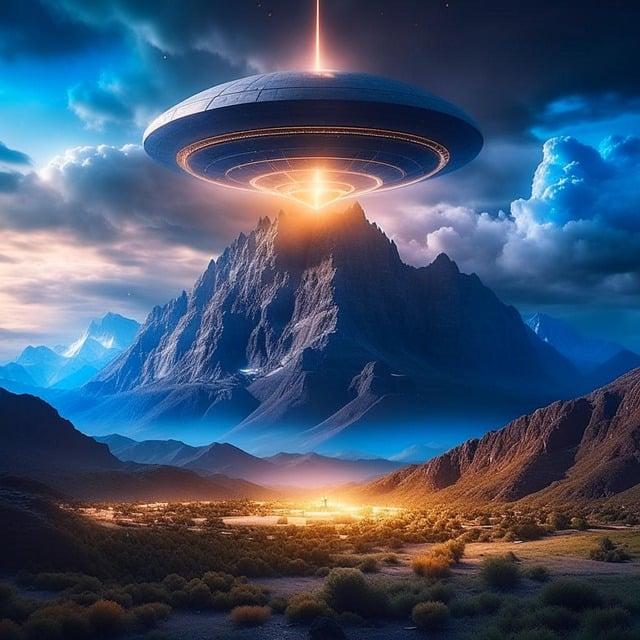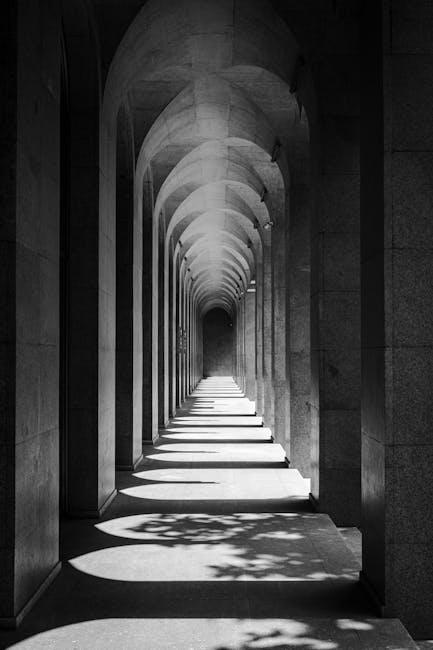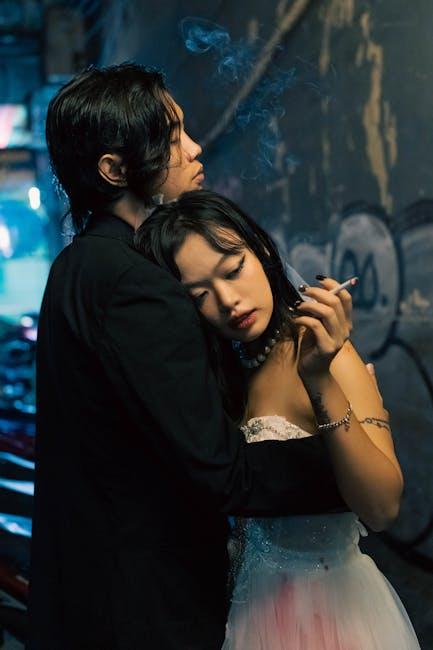In the dim glow of a theater, as the screen flickers to life, a quiet tension begins to weave its spell. This palpable sense of suspense is no accident; it is a carefully crafted symphony of visual storytelling. Directors, wielding the camera like a brush, use creative framing to sculpt moments of anticipation and unease. Through the strategic play of angles, composition, and perspective, they guide our gaze and manipulate our emotions, transforming simple scenes into powerful narratives. This article delves into the art of framing, exploring how filmmakers masterfully construct tension, drawing viewers to the edge of their seats without uttering a single word.
Mastering the Art of Perspective: Techniques for Dynamic Framing
In the realm of filmmaking, the use of perspective can transform a scene from ordinary to extraordinary, imbuing it with tension and emotion. Directors often employ a variety of techniques to manipulate perspective, crafting a visual narrative that captivates the audience. One such method is the Dutch angle, where the camera is tilted to one side. This technique disorients the viewer, creating a sense of unease that is perfect for scenes of suspense or impending chaos.
Another powerful tool is the use of extreme close-ups. By focusing intensely on a character’s eyes or a trembling hand, directors draw the audience into the character’s inner world, heightening the emotional stakes. Additionally, the use of negative space can be equally effective. Leaving vast amounts of empty space around a subject can evoke feelings of isolation or vulnerability. Directors often blend these techniques to enhance storytelling:
- Low-angle shots: Make characters appear powerful or menacing.
- High-angle shots: Create a sense of vulnerability or diminishment.
- Over-the-shoulder framing: Engages viewers in the character’s perspective, adding intimacy or tension.
By mastering these techniques, filmmakers not only tell a story but also invite the audience to feel every heartbeat of the narrative.
The Role of Camera Angles in Heightening Suspense
Camera angles are a powerful tool in a director’s arsenal for crafting suspense. By manipulating the viewer’s perspective, directors can evoke emotions that heighten tension and uncertainty. A low-angle shot, for instance, can make a character appear more menacing or dominant, instilling a sense of dread. Conversely, a high-angle shot might render a character vulnerable, amplifying the stakes in a scene. These choices are not arbitrary; they are meticulously planned to guide the audience’s emotional journey.
- Close-ups: By focusing on a character’s face, close-ups can capture subtle expressions and create intimacy, making the viewer feel the character’s anxiety.
- Over-the-shoulder shots: These angles provide limited information, placing the audience in a state of anticipation about what might be lurking just beyond the frame.
- Wide shots: Used sparingly, they can isolate characters in their environment, emphasizing their solitude and vulnerability.
Through these creative framing techniques, directors not only tell a story but also engage the audience’s imagination, keeping them on the edge of their seats.

Harnessing Negative Space: Creating Unease Through Composition
In the realm of cinematic storytelling, the strategic use of negative space can evoke a profound sense of unease. By deliberately positioning characters or objects within a frame, directors manipulate the viewer’s focus and emotional response. This empty space, often vast and seemingly purposeless, serves as a canvas for tension, leaving the audience anticipating what might emerge from the void.
- Isolation and Vulnerability: Characters placed in the corner of the frame, surrounded by emptiness, can appear isolated, enhancing their vulnerability.
- Imbalance and Discomfort: Off-center compositions create a sense of imbalance, subtly unsettling the viewer and maintaining a lingering tension.
- Anticipation of the Unknown: The open space invites the imagination, suggesting unseen threats or impending events just beyond the frame.
By utilizing negative space, directors craft a visual narrative that extends beyond the immediate action, engaging the audience’s subconscious and amplifying suspense through thoughtful composition.

Balancing Light and Shadow: Crafting Mood with Visual Contrasts
In the realm of filmmaking, the strategic interplay of light and shadow serves as a potent tool for directors to evoke emotion and build tension. By juxtaposing brightness with darkness, filmmakers can craft a mood that captivates the audience, guiding their emotional journey through the narrative. This visual contrast is not merely about aesthetics; it’s about creating a language that speaks directly to the subconscious, allowing viewers to feel the underlying tension without overt exposition.
- Chiaroscuro: This technique, borrowed from Renaissance painting, uses stark contrasts to highlight the conflict between good and evil, safety and danger.
- Silhouettes: By obscuring details, silhouettes add mystery, making characters appear enigmatic and their intentions ambiguous.
- Selective Lighting: Directors often illuminate only parts of a scene, drawing attention to specific elements while leaving others in shadow, creating a sense of unease.
Through these methods, directors orchestrate a dance of light and shadow, transforming simple frames into complex psychological landscapes. The careful balance of these elements ensures that each scene resonates deeply, pulling the audience into the heart of the story.

